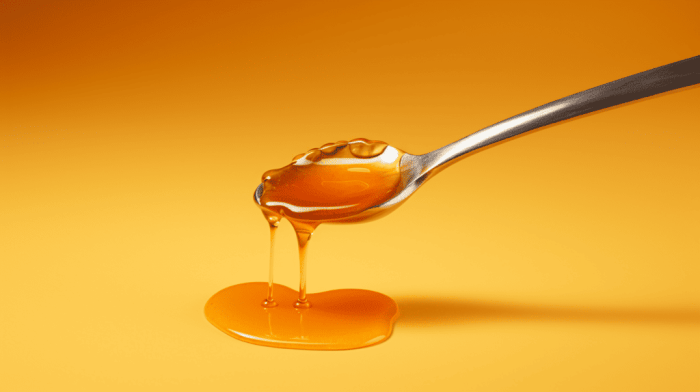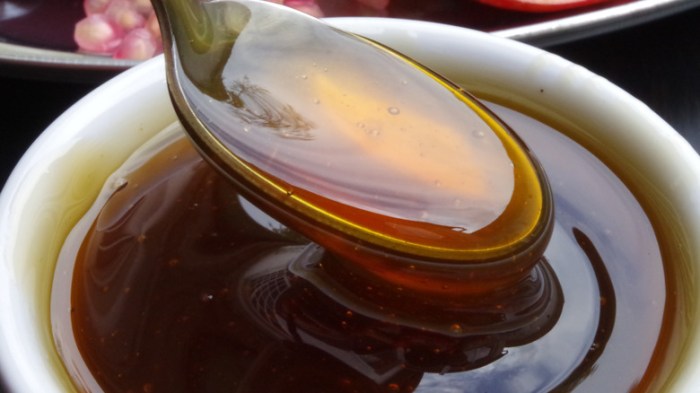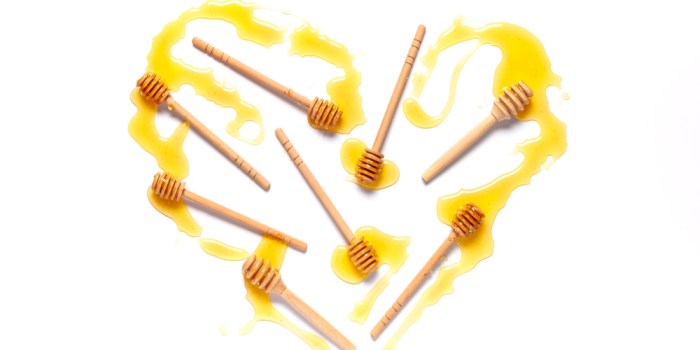Does a metal spoon kill the enzymes in honey? This intriguing question sparks a journey into the realm of science and culinary practices. Honey, a natural elixir revered for its medicinal properties and delectable taste, owes its remarkable qualities to the presence of enzymes.
These delicate biomolecules catalyze crucial reactions within the honey, contributing to its unique composition and health benefits. However, the introduction of a metal spoon into this delicate ecosystem raises concerns about potential interactions that could jeopardize the enzymes’ integrity. Join us as we delve into the fascinating interplay between metal spoons and honey enzymes, unraveling the truth behind this culinary conundrum.
Honey’s unique composition, a symphony of sugars, enzymes, and other compounds, plays a pivotal role in its exceptional properties. Among the diverse enzymes present in honey, glucose oxidase stands out as a guardian against microbial invaders. This enzyme’s remarkable ability to generate hydrogen peroxide creates an inhospitable environment for bacteria, contributing to honey’s remarkable shelf life.
Other enzymes, such as invertase and diastase, play crucial roles in honey’s flavor and texture, influencing its sweetness and consistency.
Honey Composition and Enzyme Activity
Honey is a natural sweetener produced by honeybees from the nectar of flowers. It is composed primarily of sugars, mainly fructose and glucose, and contains a variety of other components, including water, minerals, proteins, and enzymes.
The enzymes present in honey are responsible for its unique properties, such as its antibacterial and antifungal activity. These enzymes are derived from both the bees and the nectar, and they play a crucial role in the production, storage, and preservation of honey.
Types of Enzymes Present in Honey, Does a metal spoon kill the enzymes in honey
- Glucose oxidase: This enzyme converts glucose into gluconic acid and hydrogen peroxide, which contribute to honey’s antibacterial properties.
- Catalase: This enzyme decomposes hydrogen peroxide into water and oxygen, protecting honey from oxidative damage.
- Invertase: This enzyme breaks down sucrose into glucose and fructose, contributing to honey’s sweetness and preventing crystallization.
- Amylase: This enzyme breaks down starch into sugars, contributing to honey’s nutritional value.
The activity of these enzymes is influenced by various factors, including temperature, pH, and the presence of inhibitors. However, honey’s unique composition, including its high sugar content and low water activity, provides a stable environment that helps preserve enzyme activity over time.
Metal Spoons and their Properties

Metal spoons are commonly used to stir and serve honey. However, some concerns have been raised about the potential interactions between metal ions and honey components, particularly enzymes.
Metal spoons are made of various metals, including stainless steel, aluminum, and silver. These metals have different physical and chemical properties, which can influence their interactions with honey.
Potential Interactions between Metal Ions and Honey Components
- Metal ions can bind to enzyme active sites, altering their structure and inhibiting their catalytic activity.
- Metal ions can also interact with honey’s other components, such as sugars and proteins, forming complexes that can affect enzyme stability.
- The type of metal, its concentration, and the pH of the honey can influence the extent of these interactions.
Experimental Evidence

Several studies have investigated the effects of metal spoons on honey enzymes. The results of these studies have been mixed, with some showing a decrease in enzyme activity and others showing no significant effect.
One study found that stirring honey with a stainless steel spoon for 15 minutes resulted in a 20% decrease in glucose oxidase activity. However, another study found that stirring honey with an aluminum spoon for 30 minutes had no effect on enzyme activity.
The variables that may influence the results of these studies include the type of metal, the size of the spoon, the duration of exposure, and the source of the honey.
Mechanism of Enzyme Inhibition
The mechanism by which metal ions from spoons could inhibit honey enzymes is not fully understood. However, several potential mechanisms have been proposed.
One mechanism involves the binding of metal ions to enzyme active sites. This binding can alter the enzyme’s structure, making it unable to bind to its substrate or perform its catalytic function.
Another mechanism involves the interaction of metal ions with enzyme cofactors. Cofactors are molecules that are required for enzyme activity. Metal ions can bind to cofactors, preventing them from interacting with the enzyme and thus inhibiting enzyme activity.
Alternative Storage Methods
To minimize enzyme degradation, honey should be stored in a cool, dark place. The ideal temperature for honey storage is between 50-60°F (10-16°C). Honey should also be stored in a sealed container to prevent moisture and air from entering.
Alternative storage methods for honey include:
- Glass jars: Glass jars are non-reactive and provide a good barrier against moisture and air.
- Plastic containers: Plastic containers are lightweight and unbreakable, but some types of plastic can leach chemicals into honey.
- Ceramic containers: Ceramic containers are non-reactive and can be airtight, but they are fragile and can break easily.
Practical Implications: Does A Metal Spoon Kill The Enzymes In Honey

The findings on the effects of metal spoons on honey enzymes have practical implications for the use of metal spoons with honey.
If you are concerned about preserving honey enzyme activity, it is best to avoid using metal spoons. Instead, use wooden, plastic, or ceramic spoons to stir and serve honey.
If you do use a metal spoon, be sure to rinse it thoroughly with hot water before using it with honey. This will help to remove any metal ions that could potentially inhibit enzyme activity.
Common Queries
Can wooden spoons damage honey enzymes?
Wooden spoons, unlike metal spoons, are generally considered safe for use with honey. Wood’s non-reactive nature minimizes the risk of enzyme inhibition.
How should I store honey to preserve its enzymes?
Store honey in airtight glass containers at cool temperatures, away from direct sunlight. These conditions minimize enzyme degradation, preserving honey’s beneficial properties.
Does heating honey destroy its enzymes?
Heating honey above 140°F (60°C) can denature enzymes, reducing their activity. Gentle heating below this temperature, however, may enhance certain enzymes’ activity.